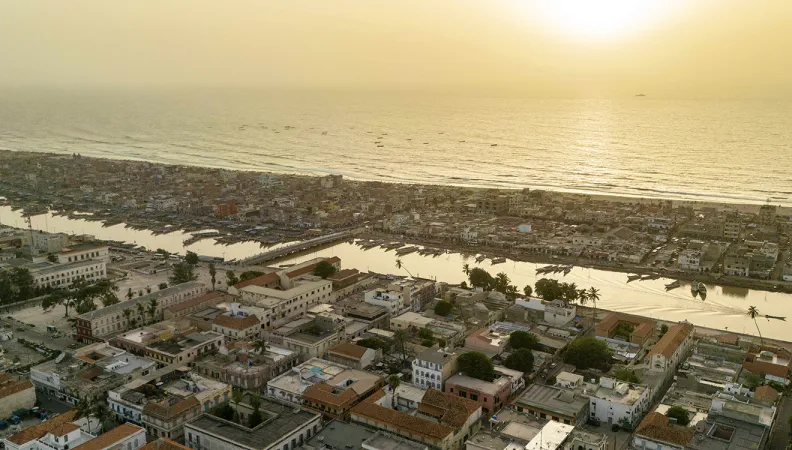Share the page
5 Things to Know about the Summit for a New Global Financial Pact
Published on

Developing countries are exposed to a growing number of threats, from climate change to health emergencies, as well as the global financial fallout from political and military crises. How to provide them with the support they need? The Summit for a “New Global Financial Pact,” in Paris on 22 and 23 June, will seek answers to this dilemma. We unpack five aspects of this groundbreaking summit.
WHY is there a need for a NEW GLOBAL FINANCIAL PACT?
International financial solidarity is still based on the World Bank and International Monetary Fund (IMF), which came about in 1944 through the Bretton Woods Agreement. But the emergence of a number of countries since then and their economic rise, as well as shifts in the global geopolitical order, have prompted the need to reform these institutions and change existing financial mechanisms.
“One of the challenges lies in rebuilding confidence at international level,” says Thomas Melonio, AFD’s Executive Director of Innovation, Strategy, and Research. “This confidence has been dented, partly because of the difficulty of achieving the €100 billion a year for climate finance and the serious question mark over the handling of the Covid-19 crisis. We’re also seeing an acceleration of the effects of climate change, which leads to a risk of isolationism on the part of certain countries. So, there’s an urgent need to strengthen international cooperation.”
The Summit for a New Global Financial Pact will bring together a hundred or so Heads of State and Government, Heads of multilateral development banks, 120 NGOs, 70 private sector partners and 40 international organizations. During six round tables, they will discuss ways of laying the groundwork for a new financial system.
WHAT ARE THE MAIN OBJECTIVES OF THE SUMMIT?
For several months now, four working groups have been discussing the four main objectives of this summit:
- Give new fiscal space to countries faced with difficult situations in the short term, especially the most indebted countries
The first objective is to improve the offer of international financial institutions, in particular by reviewing how to handle the issues of debt and debt relief in the event of a crisis.
“Africa in particular has seen an increase in both its debt and its rates,” says Melonio. “One of the issues for this summit is to support the Paris Club’s action to implement the G20 Common Framework and especially alleviate the debt burden of four countries: Chad, Zambia, Ethiopia and Ghana.”
- Promote private sector development in low-income countries
What is the best way to support entrepreneurship and stimulate a job-rich private sector? This working group focused on the mobilization of various resources (local financing, public institutions and private funds) and the development of tried and tested initiatives such as the Alliance for Entrepreneurship in Africa.
- Promote investment in “green” infrastructure for the energy transition in emerging and developing countries
Infrastructure projects are needed for the development of the housing, health, water and transport sectors. But this infrastructure can no longer be designed without taking environmental needs into account. How to facilitate investment in sustainable infrastructure?
- Mobilize innovative financing for countries vulnerable to climate change
Various innovative mechanisms can be used to mobilize additional resources for countries vulnerable to climate change, such as carbon credit markets, new taxes on profits from globalization, and debt instruments taking greater account of natural disasters.
“Under the Bridgetown Initiative, devised during COP27 by Barbadian Prime Minister Mia Mottley, small island States, which are more exposed to climate hazards, demand an automatic reduction of their debt in the event of a natural disaster,” says Melonio. “Loans with climate clauses are among the innovative instruments envisaged: if the country concerned is hit by a cyclone, its repayments will automatically be rescheduled over the following years.”
WHAT ARE “SPECIAL DRAWING RIGHTS”?
One of the North-South solidarity mechanisms is the issuance of Special Drawing Rights (SDR). In the event of major economic crises, the IMF distributes these reserve assets to national central banks on an exceptional basis. But as this allocation is proportional to the quota held by each country at the IMF, and therefore to their weight in the global economy, African countries only receive a small proportion because their quota is low.
In 2021, France pledged to redirect $100 billion of SDR to African countries. This is being held back by complex procedures.
“A portion of SDR could transit through local development banks, such as the African Development Bank and the Inter-American Development Bank,” says Melonio. “In addition to a higher level of funding, if the reallocation of SDR was channeled through regional banks, it would provide a way of strengthening the weight in global governance of these institutions and the countries they represent.”
WHY MUST WE SIMULTANEOUSLY ADDRESS POVERTY REDUCTION, DECARBONIZATION AND BIODIVERSITY PROTECTION?
“Some countries are concerned that the climate agenda will sideline the fight against poverty,” says Thomas Melonio. “But AFD Group’s position is very clear: it is necessary to fight against climate change to fight against poverty.”
The fight against climate change and fight against poverty are compatible. Especially if the action to be taken is well thought out beforehand, as the solutions differ depending on each country’s emissions, revenues and level of exposure to climate change.
“For example, today it is no longer possible to consider financing a rural development project without taking future climate conditions into account. Conversely, when we support the environmental transition of a country, we pay close attention to ensuring that it is socially just.”
HOW CAN THIS SUMMIT FACILITATE THE COP28 NEGOTIATIONS?
With 2025 and the end of the commitment period for climate finance drawing close, and the target of $100 billion a year barely reached, what will happen next?
Public Development Banks make a substantial contribution to climate finance (AFD Group provides €6 billion of climate finance a year), but the private sector’s contribution still falls short.
“It is possible to scale up the role of private finance with the support of public banks,” says Thomas Melonio. “It’s provided for in the Paris Agreement. If this summit focuses on the notion of leverage, the volume of public finance and the mobilization of private finance, it can remove barriers to a higher level of ambition for the future. It can address aspects to ensure that the next COP is a success. This summit is a milestone in this respect.”
Further reading: Official Development Assistance in an Age of Consequences
